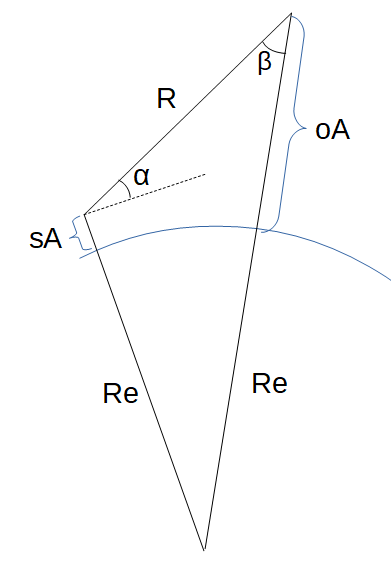Target Radar Cross Section (RCS)
The Target Radar Cross Section calculator computes the cross-section of a object for a Synthetic Aperture Radar (SAR) based on the refectivity, azimuth, slant range, grazing angle, radar frequency, reference frequency and the frequency dependence.
INSTRUCTIONS: Choose units and enter the following:
- (σ0,ref) This is the distributed target reflectivity (m2/m2) at the nominal frequency.
- (ρa) This is the image azimuth resolution.
- (ρr) This is the slant-range resolution.
- (Ψg) This is the Grazing Angle at the target.
- (ƒ) This is the Radar Nominal Frequency.
- (ƒref) This is the Reference Nominal Frequency
- (n) Radar Cross Section Dependence
Target Radar Cross Section (RCS): The calculator returns the cross section in square meters. However, this can be automatically converted to compatible units via the pull-down menu.
The Math / Science
The formula for target radar cross-section used in this calculator is:
σ = σ0,ref ⋅ ((ρa * ρr)/ cos(ψg)) ⋅ (f/fref)n
This lookup equation calculates the target radar cross section1 of a distributed target for radar SNR.
There isn't quite enough room in the text box, so I'll repeat it here: `sigma_(0,ref)` is the distributed target reflectivity `(m^2/m^2)` at nominal reference frequency `f_"ref"`.
This equation is most helpful in the context of calculating the Signal-to-Noise of a Synthetic Aperture Radar.

- SNR Gain Due to Azimuth Processing (coherent pulse integration)
- SNR Gain Due to Range Processing (pulse compression)
- Target Radar Cross Section
- Monostatic SAR Transmitter Antenna Gain Factor
- Radar Atmospheric Loss
- SAR Duty Factor
- Grazing Angle
- Slant Range
- Slant Range (Beta Angle)
See Also
- ^ Performance Limits for Synthetic Aperture Radar - Second Edition. Sandia National Laboratories, Albuquerque, NM. Printed February 2006.

